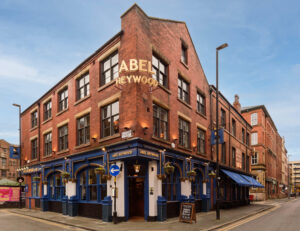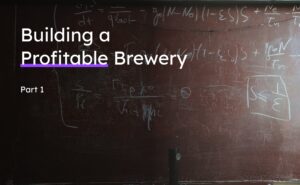Who’s buying what, and why? In this article David Jackson, the co-founder of nationwide drinks distributor EeBria, gives his insight on what people are buying and how they’re buying it, too.
EeBriaTrade is a nationwide drinks distributor offering beer, cider, wine, spirits and more directly from over 700 of the UK’s best drinks producers. All products are shipped directly from the producer, using their nationwide fulfilment network, offering quick, consolidated deliveries, at direct from the producer prices. David Jackson is the company’s CEO and says that when it comes to the last 12 months, Pale Ales and IPA remained at the top of the table, but that’s only part of the story.
“These consistently form the bulk of our volume. Sours have continued their steady growth as a category, as the public become more accustomed to them and they become more widely available,” he explains. “The biggest drop was in the DIPAs and TIPAs which after years of steady growth dropped off a lot in both keg and can, as drinkers favoured lower alcohol hop bombs.”
Jackson adds: “More widely we saw a reigniting of interest in great cask beer, as that surged in sales on EeBriaTrade. Alongside this styles more normally associated with cask beer (Bitters, Milds etc.) saw growth, across both keg and packaged. No and Low continued its impressive growth, continuing to form an increasingly large share of our sales (now 6%), with a particularly impressive increase in keg where it grew by 155% compared to 2021.”
A focus on ABV
As above there has been a general shift to lower ABVs with the increase of No/Low and the reduction of sales of big DIPAs and TIPAs, and we’ve seen a strong overall ABV drop across all styles and formats (other than cask which has stayed between 4.33% and 4.38% for the last 5 years!).
2022 saw the average ABV at 4.9% down from 5.2% in 2021 and 5.4% in 2020. Packaged beer has a higher average ABV than keg (averaging around 5.6% in 2022, when excluding no/low beers), as brewers reserve the higher ABV “special” beers for packaged.
Cans continues to dominate
One of the largest trends over the past few years has been the growth of cans, from just 27% of beer volume in 2016 to 89% in 2022 (with a slight increase on 2020 and 2021, both at 87%). Within cans themselves it was initially all in 330ml cans, but now 73% of all can volume selling is in 440ml can.
Typically now the brewers that use 330ml cans are reserving them for the easy drinking, core beers that enable them to hit certain target prices across the bar, or on the shelves. Whereas 440ml is a preferred volume by drinkers who are a little less price-conscious.
Ten years young in 2023
So much has changed in the 10 years of EeBria, it’s hard to list them all! Without question the biggest shift is the growth of can. When we started EeBria.com in 2013, there wasn’t a single can available on the site, and it was unthinkable that a good beer wouldn’t come in a bottle. Obviously this has completely switched around and can is the king.
When we started we also thought we were in the middle of the craft beer boom, and that the growth of breweries would slow. Nothing could be much further from the truth, and those breweries we worked with in 2013 have mostly gone from small operations to large national brands on all the bars and supermarket shelves in the country, or brewers internationally recognised as some of the best in the world.
10 years in – Market trends
We’ve also seen, in no particular order:
- Sours become mainstream (or at least much more mainstream)
- IPAs become big US style IPAs, then become hazy East Coast IPAs and now seemingly the start of the return to West Coast IPAs
- Coinciding with this is the US craft beer scene is on less of a pedestal as drinkers now recognise that the UK brewers can produce the same styles just as well, if not better
- Craft lager has exploded and most craft breweries now brew a lager in their core range
- “Pastry” has become a legitimate word to include in a beer style!
- There are a huge volume of new hops. Previously most craft beers used some combination of Citra, Mosaic, Simcoe, Centennial and Cascade, whereas now the list is endless all giving new and exciting flavour profiles to the beers.
The road ahead in beer
We used to do predictions for the year ahead, only to be completely wrong! Every year a totally new/unexpected style will pop up that everybody ends up brewing over a couple of months, that we could never have predicted (like the summer of the Brut IPA) which quite often have a short lived life-cycle.
On more broad predictions, we expect there to be a continued resurgence in cask beer, and more of the established craft brewers starting to add cask to their range.
Alongside this we’ll see a resurgence of some of the more traditional styles that had been in decline: Bitter, Mild, Amber, Red, Stout etc. and potentially alongside that some of the less fashionable British hops. No and Low Alcohol beer will continue to gain, and I think 2023 will be the year where draught no/low alcohol beer becomes commonplace.









